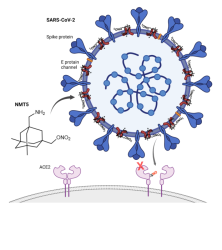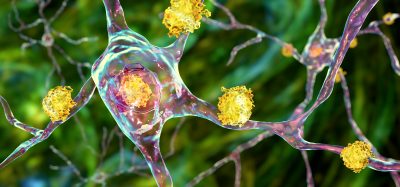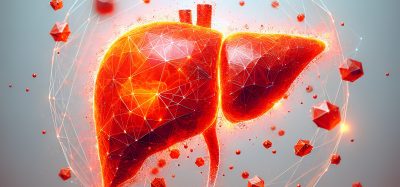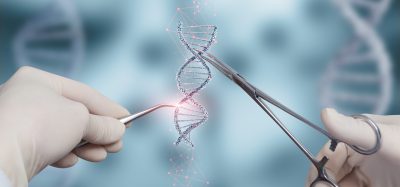New drug has potential to turn COVID-19 virus against itself
Posted: 5 October 2022 | Ria Kakkad (Drug Target Review) | No comments yet
The Scripps Research team showed that a variation of an already FDA-approved therapeutic for neurological disease can block COVID-19 infection in animals.


A new drug designed by scientists at Scripps Research, US, has the potential to turn the COVID-19 virus against itself. The drug, NMT5, recently reported in Nature Chemical Biology, coats SARS-CoV-2 with chemicals that can temporarily alter the human ACE2 receptor — the molecule the virus normally latches onto to infect cells. That means that when the virus is near, its path into human cells via the ACE2 receptor is blocked; in the absence of the virus, however, ACE2 can function as usual.
Before the COVID-19 pandemic, the team had long been studying variations of the drug memantine, which they developed and patented in the 1990s for treating neurological diseases like Alzheimer’s disease. While memantine originated from an anti-influenza drug used in the 1960s, clinicians began investigating it for additional diseases after they noticed a patient with Parkinson’s symptoms improved when she took the drug for the flu.
The team tested a library of compounds similar to memantine in overall structure but covered with additional pharmacological warheads. They pinpointed the drug candidate designated NMT5 as having two key properties: It could recognise and attach to a pore on the surface of SARS-CoV-2, and it could chemically modify human ACE2 using a fragment of nitroglycerin as the warhead. The group realised this could turn the virus into a delivery vehicle for its own demise.


A drug developed by Scripps Research scientists prevents SARS-CoV-2 (blue) from binding to ACE2 receptors (pink) to infect human cells. The drug latches on to the virus and then adds a “nitro group” similar to nitroglycerin to ACE2 whenever the drug-coated virus approaches the receptor
[Credit: Scripps Research].
In the new paper, the researchers characterised and tested NMT5 in isolated cells as well as animals. They showed how NMT5 attaches tightly to SARS-CoV-2 viral particles as the viruses move through the body. Then, they revealed the details of how the drug adds a chemical, similar to nitroglycerin, to certain molecules if it gets close enough. When the virus gets near ACE2 to infect a cell, that translates into NMT5 adding a “nitro group” to the receptor. When ACE2 is modified in this way, its structure temporarily shifts – for about 12 hours – so that the SARS-CoV-2 virus can no longer bind to it to cause infection.
In cell culture experiments testing how well the Omicron variant of SARS-CoV-2 can attach to human ACE2 receptors, the drug prevented 95 percent of viral binding. In hamsters with COVID-19, NMT5 decreased virus levels by 100-fold, eliminated blood vessel damage in the animals’ lungs, and ameliorated inflammation. The drug also showed effectiveness against nearly a dozen other variants of COVID-19, including Alpha, Beta, Gamma and Delta strains.
Most anti-viral drugs work by directly blocking part of a virus — which can pressure the virus to evolve resistance to the drug. Since NMT5 is only using the virus as a carrier, the researchers think the drug is likely to be effective against many other variants of SARS-CoV-2.
Though they have only studied the compound in animal models, the team is now making a version of the drug to evaluate for human use, while carrying out additional safety and effectiveness trials in animals.
Related topics
Drug Discovery Processes, Drug Repurposing, Screening
Related conditions
Covid-19
Related organisations
The Scripps Research Institute








